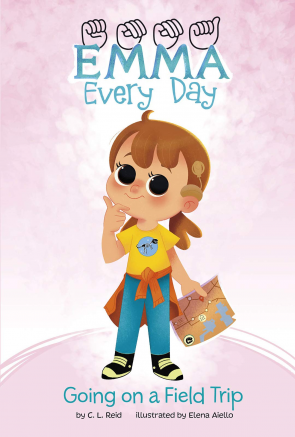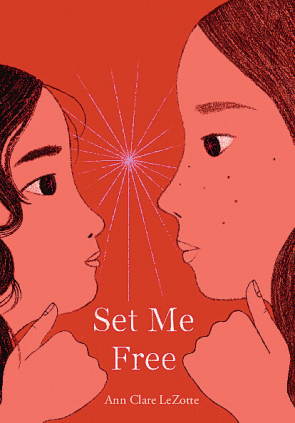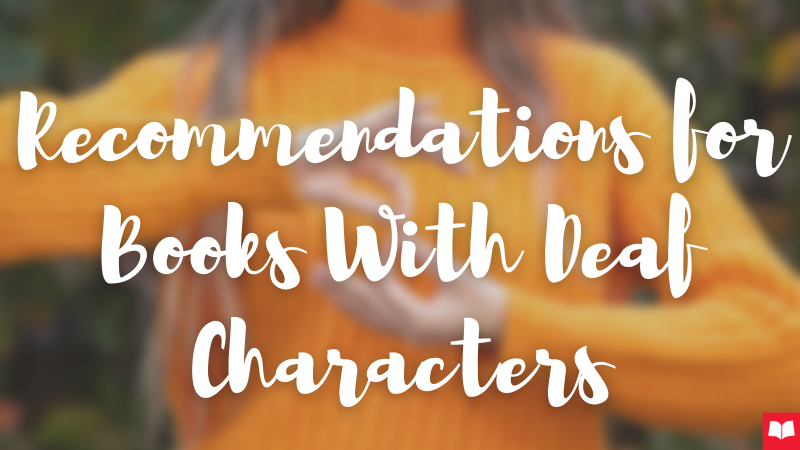*This is a guest blog post by Set Me Free author Ann Clare LeZotte.*
September is National Deaf Awareness Month. The global d/Deaf community celebrates awareness of the d/Deaf and Hard of Hearing (DHH)* community and its culture and heritage the last week of the month (September 20- 26). To commemorate, I’d like to recommend some of my favorite books with d/Deaf characters.
Even after retiring from the public library, I am constantly asked for book recommendations with accurate DHH representation. This is only a small selection of excellent titles for young readers. I’m looking forward to seeing more DHH books written by authors with lived experience. We especially need intersectional stories by DHH Black, Indigenous and People of Color (BIPOC) authors, so every DHH child sees their reality reflected in a book and the full spectrum of DHH experience illuminates and educates all young readers. Please remember to include DHH and other disability titles in diversity displays and discussions.

Recently, I found the wonderful picture book Can Bears Ski? (Candlewick, 2020). Written by award-winning deaf English poet Raymond Antrobus and illustrated by partially deaf Polly Dunbar, the book authentically demonstrates how deaf children who cannot hear are cued in by rattling vibrations and bright colors around them. The text is informative but enjoyable and there’s a perfect image of the young bear enjoying the silence of a library. It’s also a contemporary, positive depiction of an audiologist and Behind-the-ear (BTE) hearing aids, which Little Bear sometimes forgets to wear. The title is a cute play on bad lip-reading.
Another new favorite is the Emma Every Day (Capstone, 2020-21) early reader series. Deafblind since childhood, author C.L Reid received a Cochlear Implant (CI) as an adult to help her hear, and she communicates with American Sign Language (ASL). Emma also has a CI and speaks ASL. Each story is fun and charming and includes realistic situations like processing sound in a crowd. Emma is white but her best friend Izzie Jackson is Black and the Learn to Sign diagrams at the back of the books feature a diversity of children. Highly recommended for DHH kids who are struggling with English literacy.

Black Deaf Lives Matter: A fun coloring & activity book about Black Deaf life, history, culture & sign language (Independently published, 2021) honors the Black Lives Matter movement and centers the Black Deaf experience. Young readers are introduced to Black Deaf historical figures and the important events in their lives. The book includes an introduction to Black American Sign Language (BASL). This book was designed to be a fun educational tool for ages 6 and up. Author Lissa D. Ramirez-Stapleton’s teaching work focuses on building bridges between Deaf and hearing communities of Color. Black Deaf illustrator Shawn Richardson brings just the right tone to this interactive work.
Deaf author/illustrator Cece Bell’s Newberry Honor-winning, autobiographical graphic novel El Deafo (Abrams, 2014) is beloved to many, but it always deserves recommendation. Bell, who humorously depicts young Cece with a rabbit’s ears and face, chronicles her early experiences with deafness, an enormous hearing aid and navigating friendships. Even those who know the original by heart, will want to check out the Superpowered Edition (Amulet, 2020) with 40 all-new pages of childhood photographs, early sketches, notes from Cece, and much more!

There are numerous books by hearing authors with accurate portrayal of DHH characters and engaging stories. Some of my favorites are Alex Gino’s You Don’t Know Everything, Jilly P! (Scholastic, 2018), Erin Entrada Kelly’s Newbery Medal–winning Hello Universe (HarperCollins/Greenwillow, 2017), Lynne Kelly’s Schneider Award-winning Song for a Whale (Delacorte, 2019) and Jacqueline Woodson’s Feathers (G.P. Putnam, 2007).

Of special importance to me is Brian Selznick’s Wonderstruck (Scholastic, 2011). This Schneider Family Book Award–winning tour de force presents the lives of two deaf children told 50 years apart. Ben’s story starts in Gunflint Lake, Minnesota in June 1977. He was born deaf in one ear and suddenly loses hearing in the other. His story is told primarily in words. Rose's story starts in Hoboken, New Jersey in October 1927. She is kept at home, with visits from a tutor, because she is deaf. Her story is told mostly in illustrations. How their lives finally intertwine is a sweeping story of Deaf history in America. The 2017 film adaptation of the same name by director Todd Haynes introduced Deaf actress Millicent Simmonds to film audiences, and it’s a vivid, faithful companion to the book. Without Brian’s example and assistance, I would never have written and published Schneider Award-winning Show Me a Sign (Scholastic, 2020) and the standalone companion Set Me Free (Scholastic, 2021).
*Please note that June is Deafblind Awareness Month



